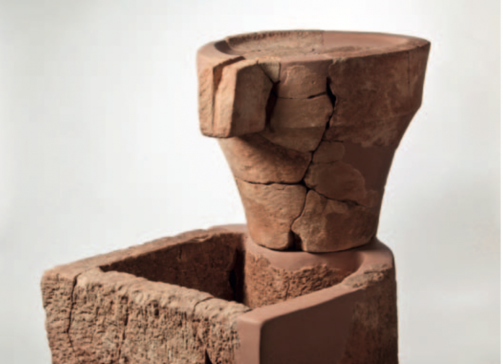The sandstone lithic artifact, found within structure no.
46 of the Nuragic village of Bia de Monti – Monte Zara, has been identified as a presumed wine press with a torricella with basin (Iron Age, Geometric Phase I, 900/850 – 725 B.C.), referable to winemaking equipment in the Nuragic Age.
The find consists of a base, superimposed by means of a supposed wooden pivot on a cylindrical shaft, the upper part of which – slightly concave – was adapted for the collection of liquids, which, through a gargoyle, poured into the tank below, where the presence of a dark deposit was also documented.
In addition, two ceramic artifacts were found in contact with the base of the basin: a trilobate oinochoe and a calotte bowl, which can be related to presumed ritual libations.
After a re-examination of the find, it would seem plausible that it reproduces, in its entirety, a specimen of an altar-tub, with probable cultic function, whose upper element recalls in form a stylized nuraghe model.
Comparison with similar finds compels consideration of hypotheses related to non-functional aspects, such as ritual, while not excluding a utilitarian function of the lithic artifact.









